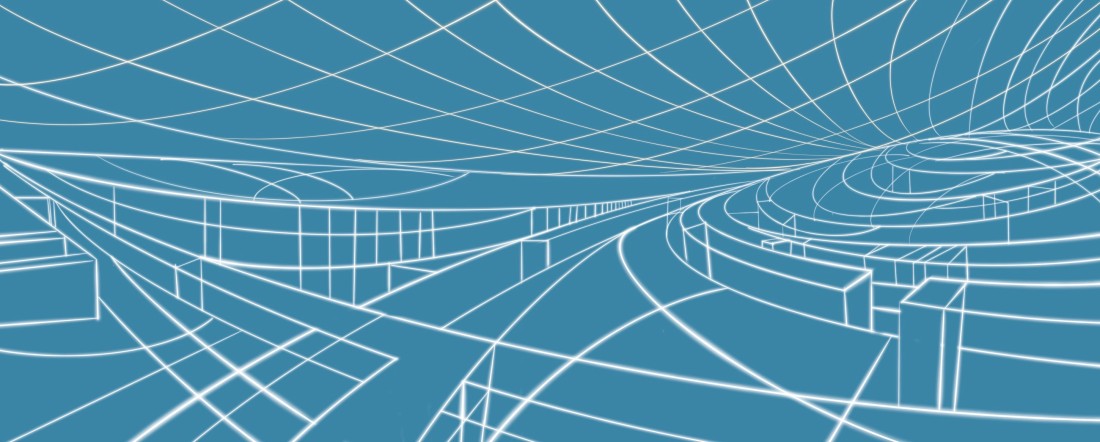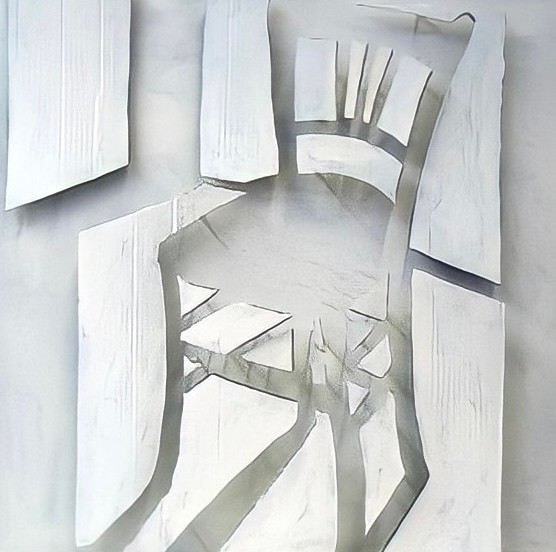lntroduction En
Aesthetics in digital and real space
What is space?
Nowhere
I like the color blue. Blue represents the color of the sky and the sea, but it's not just a color that represents the surface of objects. It represents the space between objects.
That space between objects is an empty void, a vacant space.
Empty space refers to a place where there is no matter or energy. It can also refer to a vacant space in one's mind or mental state. It represents a state of thought or emotionlessness that can be achieved through meditation or yoga.
Space emerges from the nothingness of that empty place.
Space can be understood in three main ways.
First, space refers to physically existing space in reality. It encompasses the environments we observe in our daily lives. It includes houses, buildings, roads, airports, parks, and all other physical spaces in the real world.
Second, space is a mathematical concept that can be described through coordinate systems. It allows for the mathematical representation of objects within space. Since space is a three-dimensional area where physical entities can exist, it can be measured in terms of length, width, and height. Using coordinate systems, we can mathematically express the position, size, direction, and other attributes of objects in space.
Third, space is a psychological concept related to people's thoughts, emotions, and experiences. Understanding space in the realm of the mind means it encompasses thoughts, emotions, and experiences associated with it. For example, people remember and associate their experiences with places they have visited, evoking imagination and emotions. This concept implies that people's experiences related to space influence their thoughts and emotions.
To understand space, first - Shape
Space has a form. Various interactions give rise to a resistance to movement, allowing us to perceive its shape. The fundamental resistance that enables us to sense the existence of shape is gravity. Due to gravity, we can feel the presence of shape.
To express space, second - Movement
All objects existing in the universe have three spatial properties: length, width, and height. By adding time (motion) to these properties, we can define all events occurring in the universe within the four-dimensional spacetime framework. Time is a fundamental element that accompanies space in constructing the universe.
Everything in the universe is vibration. - Albert Einstein
Space is an interaction, third - Interaction
When we refer to space as a field, it means that space itself possesses forces or attributes that affect objects or entities within it. For example, we can consider the gravitational, magnetic, and electric fields that influence an object when it exists in space.
Since space is considered as a connected field, it is important to pay attention to the complexity of the entire field when explaining causal relationships. Any event occurs within the interaction of multiple forces and fields, highlighting the interconnectedness. Ultimately, everything is interconnected, and any object or situation changes according to the surrounding context.
Space is...
Gravity itself is space. Moreover, events occurring between quantum particles are the very space and the source of time.
Space is not simply an empty place where objects can exist.
We move in space, utilize objects in space, and interact with other people in space. Space interacts with objects and plays a crucial role in determining their properties. Additionally, space is utilized in various domains such as society, psychology, and culture, forming relationships and interactions between individuals and groups.
However, space is a complex and dynamic place to control and understand objects and situations.
To me, space is...
Sometimes, when I look up and see the shimmering sky, I feel like I am observing the curved spacetime imagined by Einstein. The most beautiful theory in the world is reflected in the most beautiful space to me.
Explanation:
Space is not simply an empty void where objects can exist. We move in space, utilize objects in space, and interact with other people in space. Space interacts with objects and plays a crucial role in determining their properties. Additionally, space is utilized in various domains such as society, psychology, and culture, forming relationships and interactions between individuals and groups.
Space can be understood in three aspects: shape, movement, and interaction. First, space refers to physically existing space where we can observe everything in our daily environment. Second, space is a mathematical concept that can be expressed through coordinate systems, allowing for the mathematical representation of an object's position, size, direction, and more. Third, space is a psychological concept related to people's thoughts, emotions, and experiences. Personal experiences and memories shape one's perception of space, which in turn influences thoughts and emotions.
Lastly, space is relative and complex, interacting with various factors and undergoing changes. Space enriches our understanding and experiences from physical, mathematical, and psychological perspectives.



